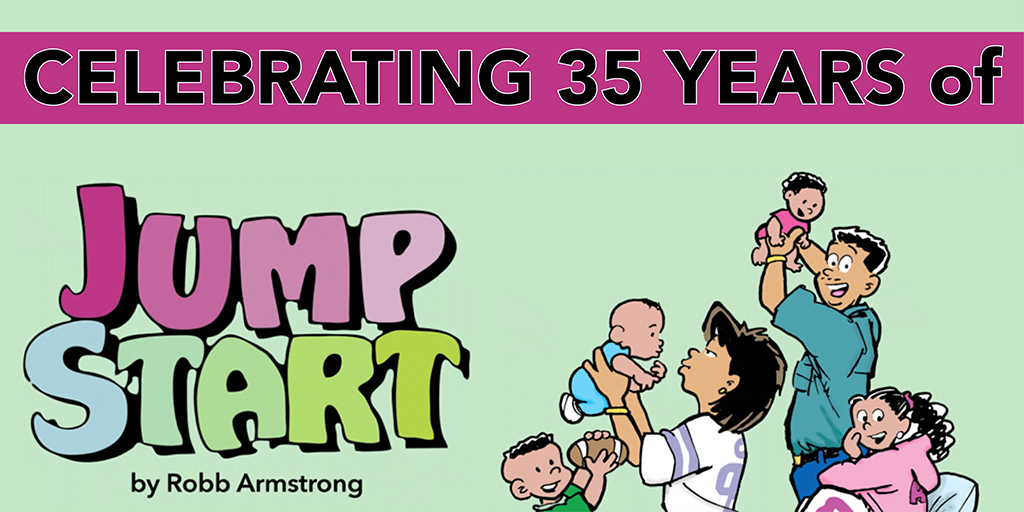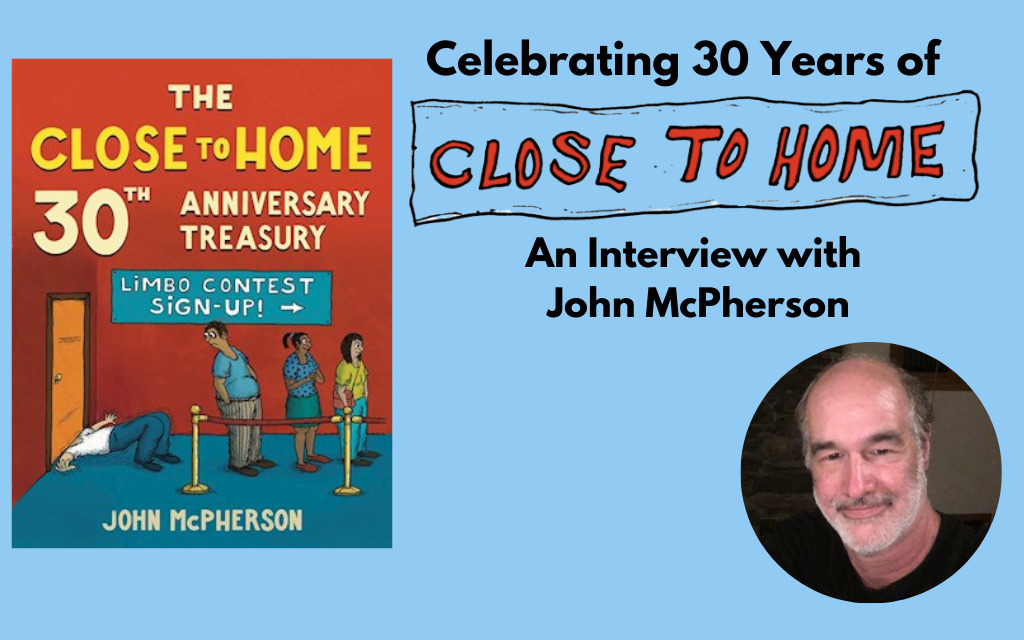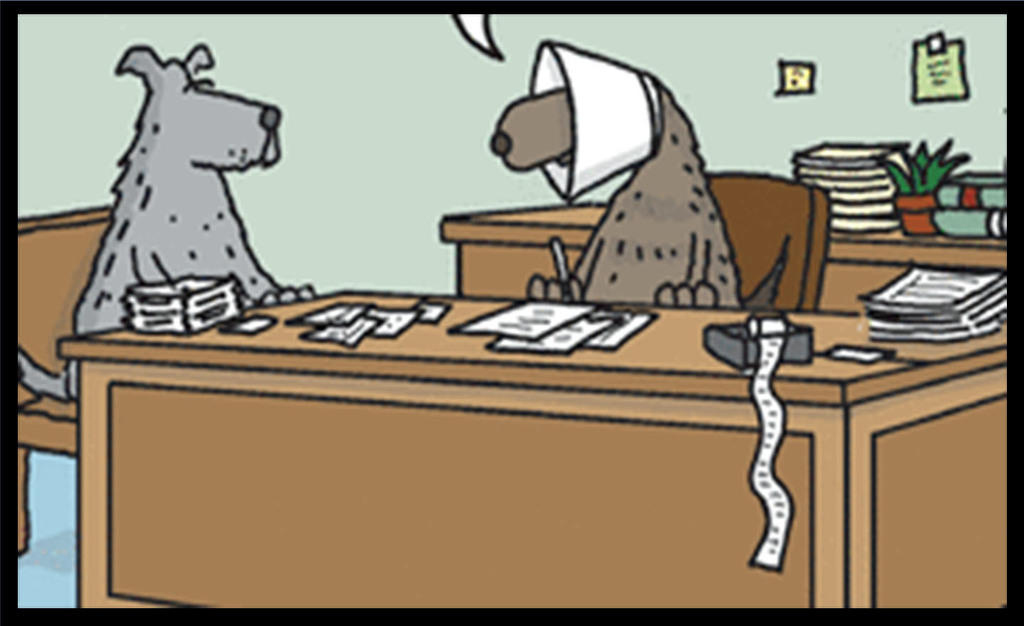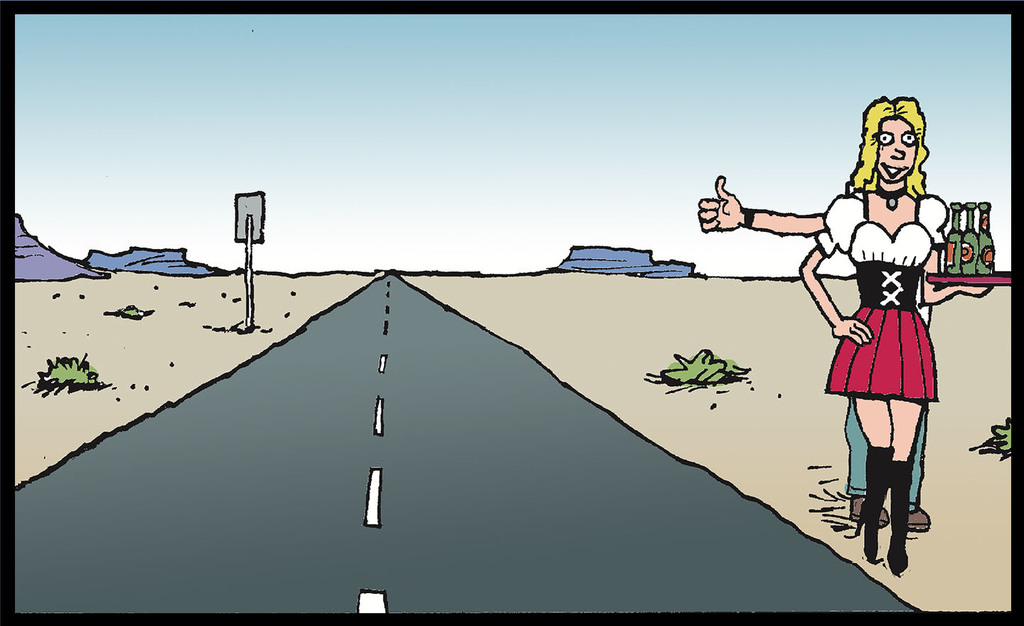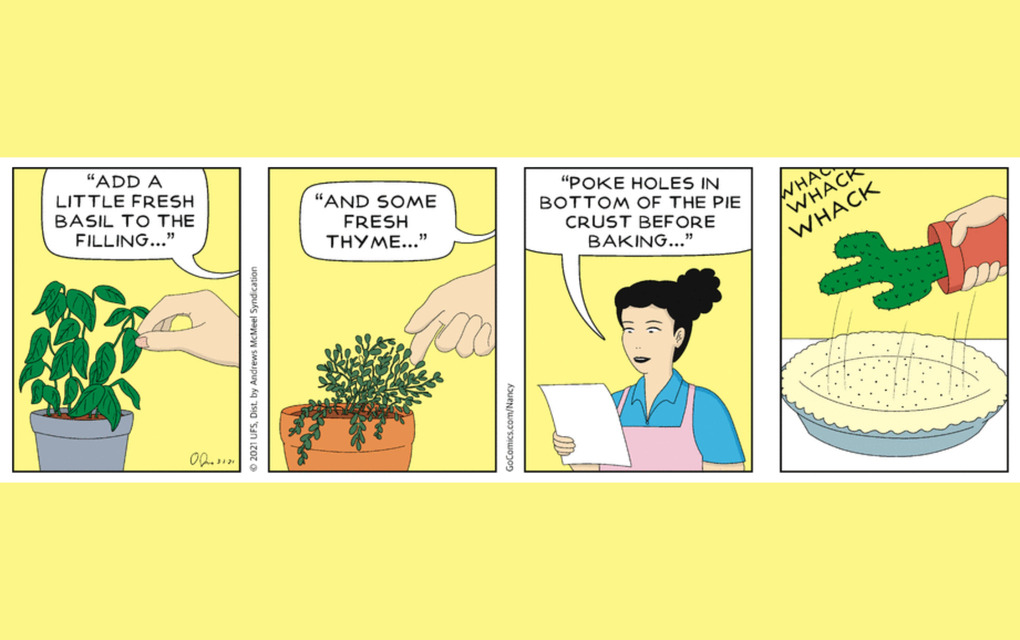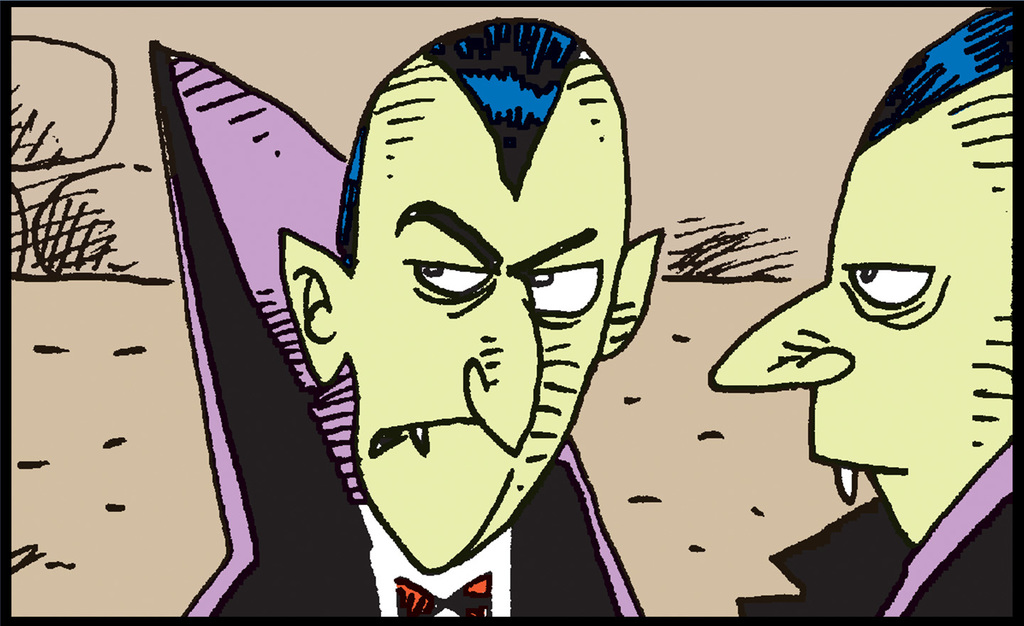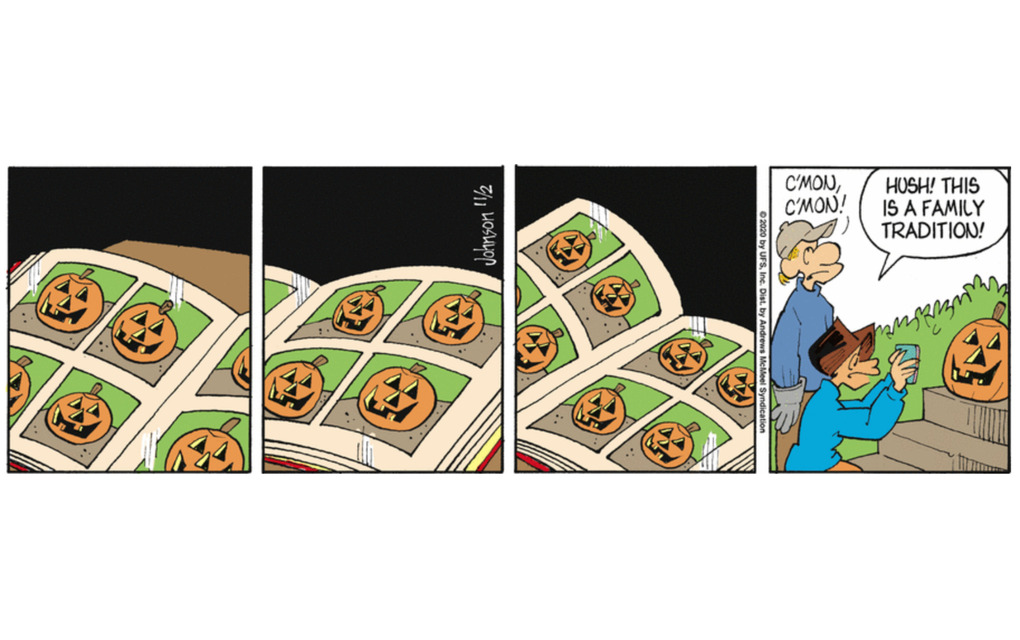Glenn McCoy (The Duplex, The Flying McCoys, Editorial Cartoonist)
by GoComics1. Tell us about the early life of Glenn McCoy. How and when did the art bug hit? When did you decide to be a cartoonist?
I'm lucky that I've always known that drawing and cartooning was in my destiny. I started drawing at the age of four. My first drawing was of the Lone Ranger. My Grandpa was a talented guy and had a unique way of teaching me how to draw. He would sit me down next to him at his kitchen table with two blank sheets of paper. My Grandpa would draw a line and then he'd have me draw the same line. Then he'd draw another line and I would match him line for line. In about an hour, we had two identical drawings of a naked woman. Around that time, my Grandma would see what we were up to and chase us out of the kitchen. My older brother, Gary, kept me drawing because he drew and I wanted to do whatever he did. We both collected Peanuts paperbacks, memorizing each punch line and even studying how the gags were structured. At that point I decided I wanted to be a cartoonist. I drew constantly though my childhood and was the cartoonist for my grade school, high school and college papers. I earned extra money as a teen drawing caricatures on the river boats docked on the river, and drumming up small freelance jobs like illustrating place mats for local pizza places. My first steady cartooning gig came after I graduated college and landed the job of editorial cartoonist at the Belleville News-Democrat.
2. Do you have other art styles (any gallery exhibits, stuff like that)? What training do you have? If someone wants to have a career like yours, how would they start?
I do a lot of different things besides editorial cartoons, ranging from comic strips (The Duplex and The Flying McCoys) to children's books, greeting cards, magazine cartoons and concept art and storyboards for TV and movies. For each editor, I try to approach the drawing differently. Although I spend a majority of my time on cartooning and illustration assignments, I make room in my busy schedule for personal work. This can sometimes be difficult, but I know painting feeds my illustrations, and vice versa. I always have a serious drawing or painting in my studio and I go back and forth from my cartooning jobs. It helps to clear the mind, explore new options and experiment with other techniques. I show my work occasionally at galleries in the St. Louis area.
3. Could you tell us about your route to syndication?
I guess you could say it was serendipity. It began when I heard of a contest King Features was sponsoring to find a new comic strip artist. The top 50 runners-up were to receive an attractive hardcover book on the history of cartooning. I entered in hopes of winning this consolation prize, and, instead won the contest. At that point, I had the attention of the syndicates, which was a weird situation for a young cartoonist to be in, because I had no strip to show. I spent the next few months working up a series of comic strip ideas, which culminated in the premise for The Duplex. I received a couple of contract offers, including one from Universal, which I quickly signed, and I've lived happily ever after.
4. Did you or your syndicate change anything about The Duplex or do we see it as you first submitted it?
When I originally submitted The Duplex to Universal, there was an extra character on each side of the apartment. On the "guy side" were two human friends and their dog, Fang. On the other side were two girls and their poodle, Mitzi. After a few weeks of development, I realized I could kill off the extra characters and incorporate their personalities into the dogs. Lately, the strip has focused more on the guys Eno and Fang because the sarcastic tone of the humor plays better with these two. I like the aspect of Fang serving as both Eno's pet and roommate. I know that at times my own dog seems like a friend until I see it drinking out of a toilet bowl. My friends hardly ever do this. It's this duality with animals being both friend and animal that I try to have fun with.
5. What attracted you to editorial cartoons? Who is your inspiration? Why?
I think what first attracted me to editorial cartooning was the quality of art being produced in the field when I was in college. As an apolitical art student I was inspired by the drawings that Jeff MacNelly, Pat Oliphant and Mike Peters were producing at that time. I was also struck by how much larger the editorial cartoons were in relation to the daily comic strips. I remember thinking what a great job it must be to be able to fill that large chunk of the paper with a drawing each day. Later, when I had landed the political cartooning job, I quickly realized the importance of having sound opinions and that the art was simply a means of expressing those ideas in a clear and concise visual way. I take what I do very seriously and I feel very blessed to be given a daily forum to voice my opinions. It's a great responsibility and I love what I do.
6. Are some editorial topics harder to draw than others? Why? What are the toughest ones? Why? Do you ever avoid those issues because of drawing issues? Are there any issues or events that you have just had artist's block, and you simply could not make the idea two-dimensional?
Some topics are tough because I've touched on them so many times in the past. Issues like government corruption, wasted tax money, voter fraud ду_ I've done so many cartoons on these subjects that the challenge becomes finding some new angle or visual metaphor to express my feelings. Another challenge is when a huge story breaks, like 9/11. In these instances, I know that every cartoonist in the world will be drawing about the same thing, so I try to avoid the obvious ideas that I think others will do and come up with something that will stand apart from my peers. Writer's block is a very real part of cartooning and something I deal with on a daily basis. Deadlines are forever looming off in the distance and there's no getting around them. The challenge of a cartoonist is to find the best idea in the short amount of time you're given. Once I have an idea, the real work is done, because the drawing is what I enjoy the most. Ultimately, deadlines are vanquished because the threat of not getting a paycheck is one hell of a motivator.
7. How long does the average editorial cartoon take? Why do they take more or less time?
When people ask me how long it took me to draw a specific cartoon, I usually reply думabout 20 years.ду Each cartoon is the cumulative product of years of honing my drawing and writing skills and comes from a lot of hard work and discipline. The hardest part about what I do is finding the right idea. This is a process that can take a few minutes or all day. My drawing style is intended to look casual and spontaneous, but I will oftentimes redraw the same cartoon four or five times because it doesn't have the right loose feel I'm striving for. In the last few years, I've started coloring my drawings in the computer, which sometimes doubles or triples the time I spend on a cartoon. I usually use up every last minute of my deadlines.
8. Walk us through the process of an editorial cartoon from concept to finished product. How long does it take? Does anyone else see the process, and do they have any say over the direction?
I usually begin each day reading the paper and checking news sites and blogs on the computer over breakfast at a coffee shop. If I'm in my studio, I'll listen to the radio or have cable news programs running with the sound down. I jot down topics that I feel strongly about or issues that the readers are writing about on the letters page. On a good day, I'll have a list of five to 10 news items to choose from. On most days, it's really an editing process. The ideas are out there, waiting for me to react to them. Ultimately, my
final decision is based on which news stories I feel most strongly about, because it's these topics that spark the best ideas. The next phase is to simply have fun scribbling sketches and free associating words, thoughts and images. This probably looks like думgoofing offду to the untrained eye, but it's at this stage in the process when the best ideas begin to appear. Once I've settled on my cartoon idea, the drawing seems to go by quickly because it's at this stage that I have the most fun. I pencil out the drawing in a very rough form because I like to surprise myself in the inking phase, making last-minute decisions and adding small details and visual jokes. Once the cartoon is inked, I scan it into the computer and add color in Photoshop. Then, I step back and brace myself for the wave of angry letters that follows.
Read The Flying McCoys, The Duplex or Glenn's editorial cartoons.


